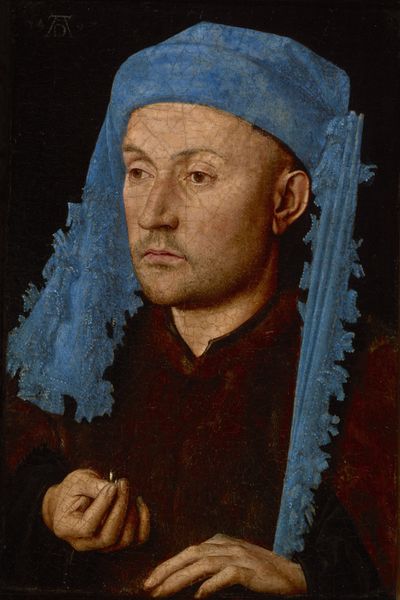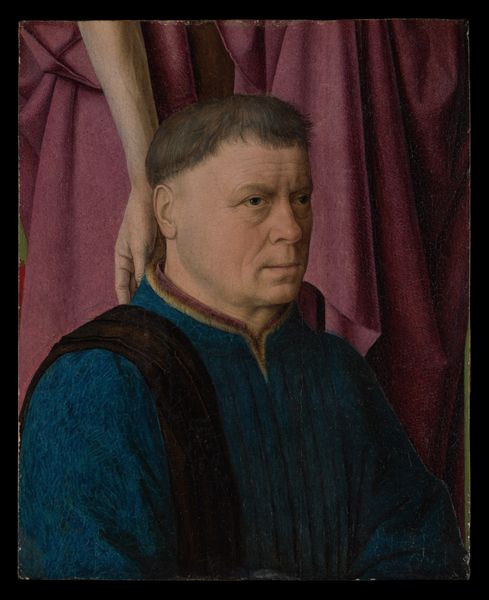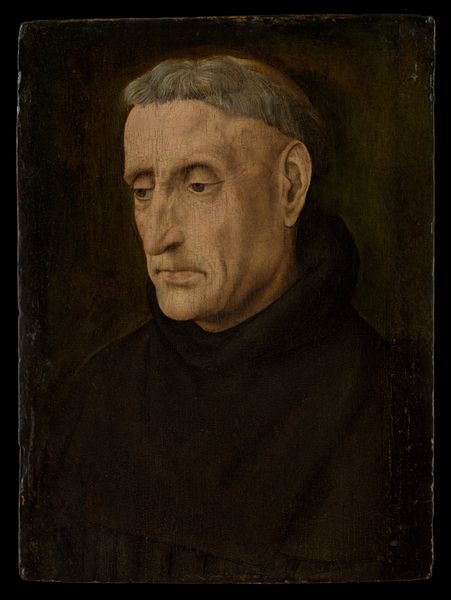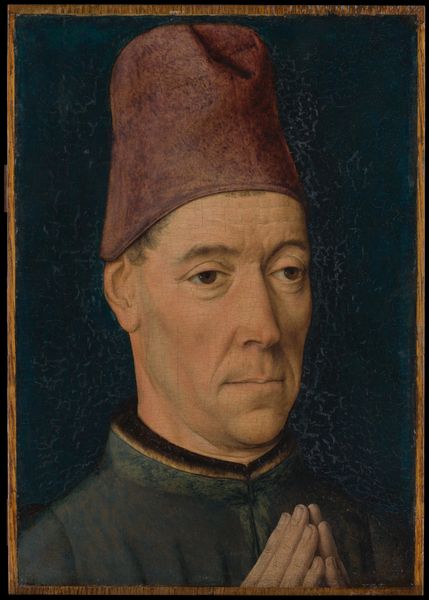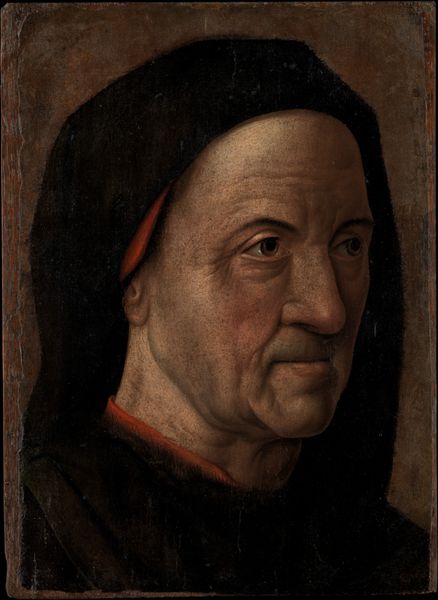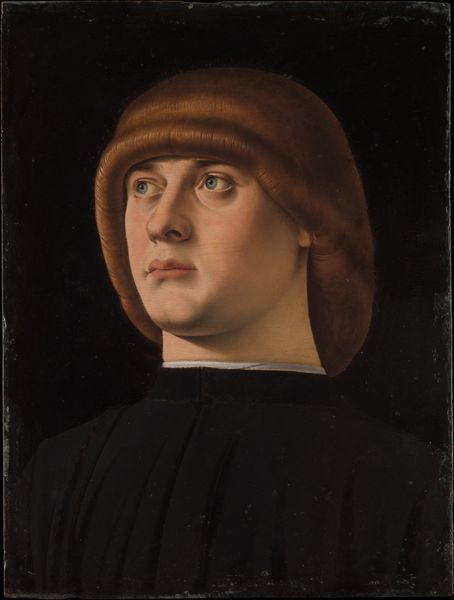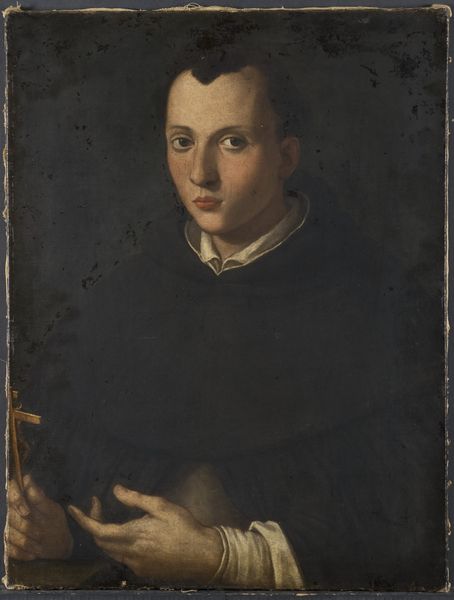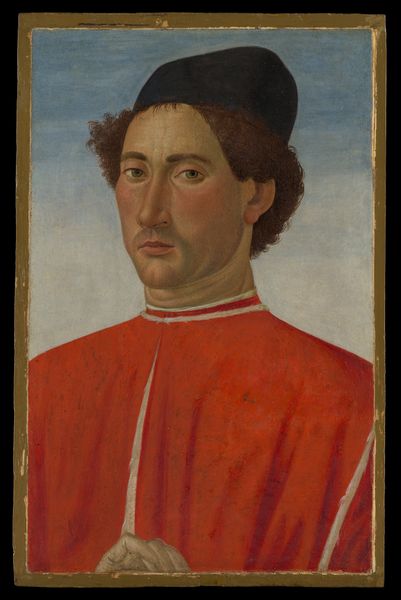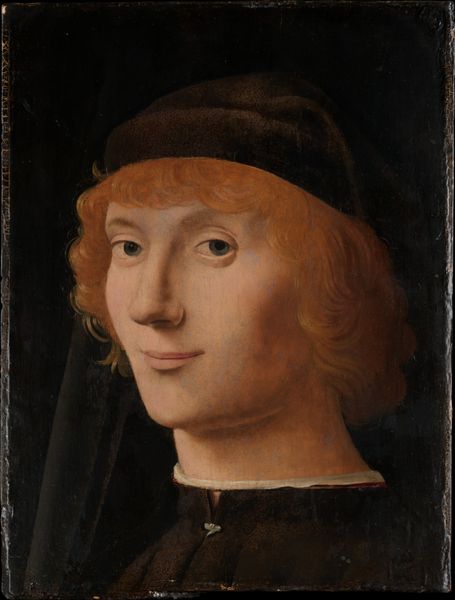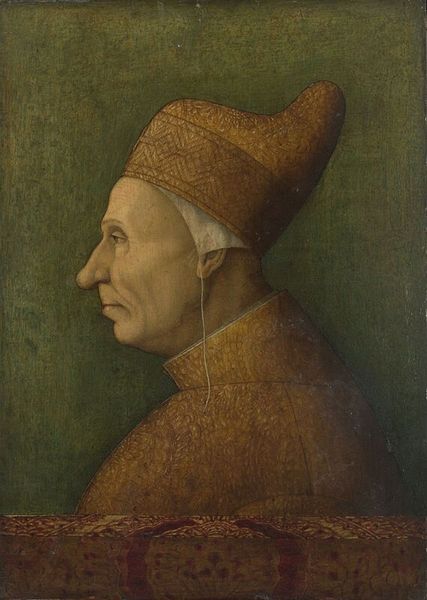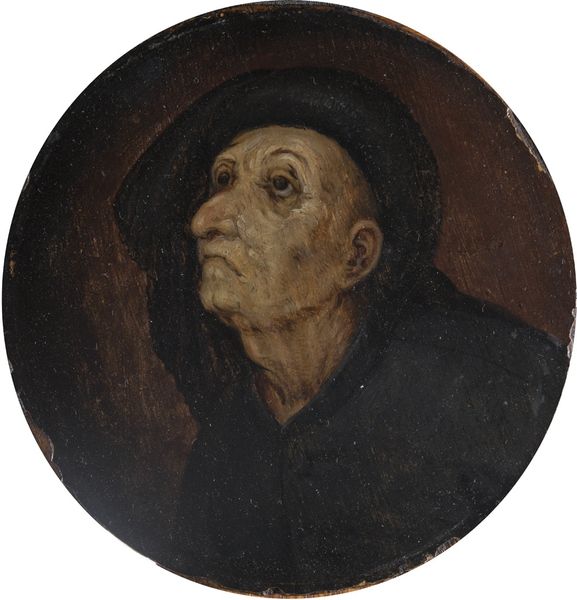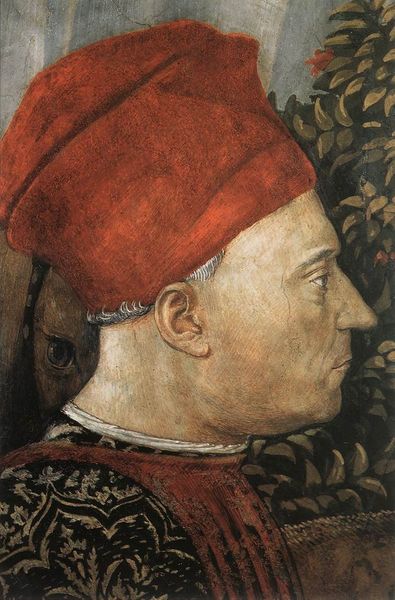
painting
#
portrait
#
painting
#
history-painting
#
early-renaissance
#
realism
Dimensions: 3 7/8 x 3 1/2 in. (9.8 x 8.9 cm)
Copyright: Public Domain
Albert van Ouwater created this small panel portrait, Head of a Donor, using oil on wood in the mid-15th century. Oil paint was prized for its capacity to mimic textures and light, but here the wood support itself plays an equally important role. Note the complex craquelure, the fine web of cracks across the surface. This is not a flaw, but a direct result of the artist’s process. He would have built up thin layers of paint, each drying and shrinking at different rates. The wood beneath, also susceptible to changes in humidity and temperature, contributes to the overall effect. Look closely, and you can see that the artist’s delicate handling of the medium has stood the test of time. The fine lines around the eyes and mouth, the subtle blush on the cheek, and the light catching the donor’s brow are all rendered with precision. Ultimately, the beauty of this work lies not just in the image itself, but in the intimate relationship between the artist, his materials, and the passage of time.
Comments
No comments
Be the first to comment and join the conversation on the ultimate creative platform.
